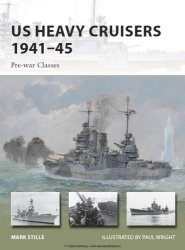The entry of the United States into the war created a
coalition, called the Grand Alliance, that ultimately defeated
the Axis Powers (Germany, Italy, and Japan). Nevertheless,
the three major Allies—Britain, the United
States, and the Soviet Union—had to overcome mutual
suspicions before they could operate as an effective alliance.
In a bid to allay Stalin’s suspicion of U.S. intentions,
President Roosevelt declared that the defeat of
Germany should be the first priority of the alliance. The
United States, under its Lend-Lease program, also sent
large amounts of military aid, including $50 billion worth
of trucks, planes, and other arms, to the Soviet Union. In
1943, the Allies agreed to fight until the Axis Powers
surrendered unconditionally. This had the effect of making
it nearly impossible for Hitler to divide his foes. On
the other hand, it likely discouraged dissident Germans
and Japanese from overthrowing their governments to arrange
a negotiated peace.
Victory, however, was only a vision for the distant future
in the minds of Allied leaders at the beginning of
1942. As Japanese forces advanced into Southeast Asia
and the Pacific after crippling the American naval fleet at
Pearl Harbor, Axis forces continued the war in Europe
against Britain and the Soviet Union. Reinforcements in
North Africa enabled the Afrika Korps under General Erwin
Rommel to break through the British defenses in
Egypt and advance toward Alexandria. In the spring of
1942, a renewed German offensive in the Soviet Union
led to the capture of the entire Crimea, causing Hitler to
boast that in two years, German divisions would be on
the Indian border. By that fall, however, the war had begun
to turn against the Germans. In North Africa, British
forces stopped Rommel’s troops at El Alamein in the
summer of 1942 and then forced them back across the
desert. In November, U.S. forces landed in French North
Africa and forced the German and Italian troops to surrender
in May 1943. On the Eastern Front, the turning
point of the war occurred at Stalingrad. After capturing
the Crimea, Hitler’s generals wanted him to concentrate
on the Caucasus and its oil fields, but Hitler decided that
Stalingrad, a major industrial center on the Volga, should
be taken first. After three months of bitter fighting, German
troops were stopped, then encircled, and finally
forced to surrender on February 2, 1943. The entire German
Sixth Army of 300,000 men was lost, but Soviet casualties
were estimated at nearly one million, more than
the United States lost in the entire war. By spring, long
before Allied troops returned to the European continent,
even Hitler knew that the Germans would not defeat the
Soviet Union.
The tide of battle in the Pacific also turned dramatically
in 1942 (see Map 6.2). In the Battle of the Coral Sea
in early May, U.S. naval forces stopped the Japanese advance
and temporarily relieved Australia of the threat of
invasion. On June 4, near Midway Island, American carrier
planes destroyed all four of the attacking Japanese
aircraft carriers and established U.S. naval superiority in
the Pacific, even though almost all the American planes
were shot down in the encounter. By the fall of 1942, Allied
forces were beginning to gather for offensive operations
into South China from Burma, through the In-
donesian islands by a process of “island hopping” by
troops commanded by U.S. General Douglas MacArthur,
and across the Pacific with a combination of army, marine,
and navy attacks on Japanese-held islands. After a
series of bitter engagements in the waters off the Solomon
Islands from August to November 1942, Japanese fortunes
began to fade.




 World History
World History









